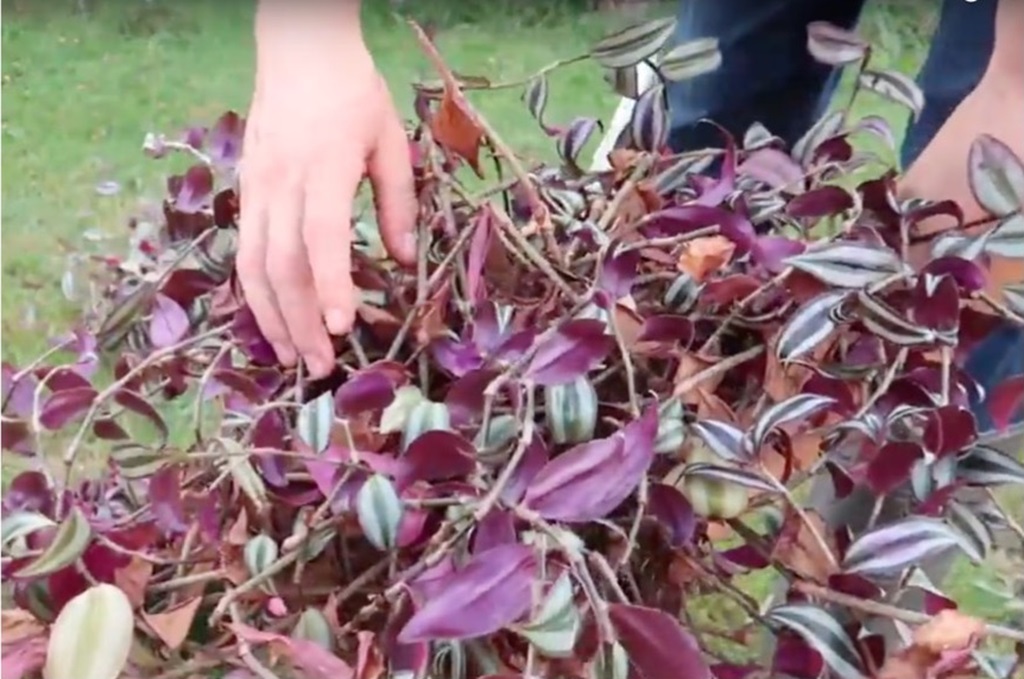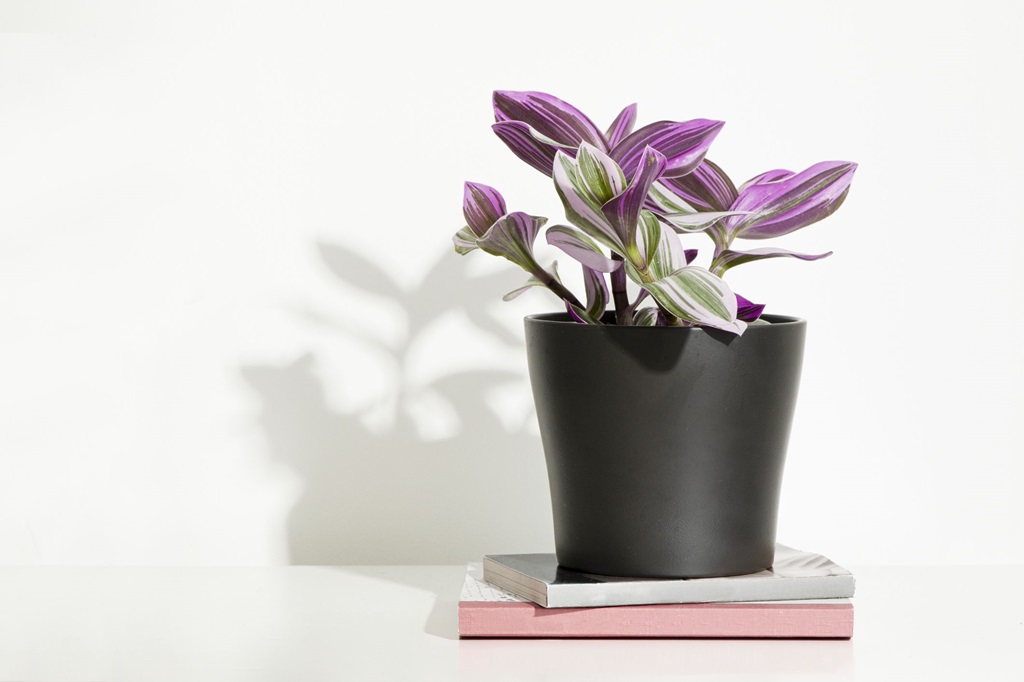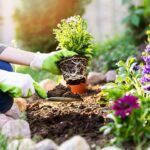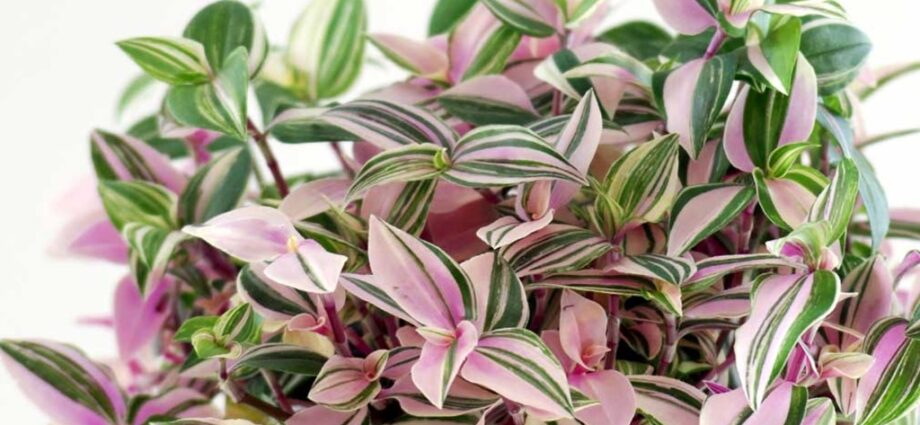The Bubble Gum Tradescantia, also known as the Pink Stripe Tradescantia or the Blushing Bride Tradescantia, is a popular houseplant known for its colorful pink-and-green striped leaves. However, these beautiful plants can sometimes start to decline, leaving plant parents wondering what went wrong.
There are a few key reasons why a Bubble Gum Tradescantia may start to die:
Overwatering
One of the most common killers of Tradescantia is overwatering. These plants prefer moist but not soggy soil. If the soil is kept too wet, it can lead to root rot.
Signs of overwatering include:
- Leaves turning brown or yellow
- Soft, mushy leaves
- Leaf drop
- Stems collapsing
- Mold growth on the soil
The solution is to allow the soil to fully dry out between waterings—only water when the top inch or two of soil becomes dry. Good drainage using a pot with drainage holes and a well-draining potting mix also helps prevent wet soil issues.
Underwatering
While overwatering is more common, underwatering can cause Tradescantia leaves to dry up and die. If the plant goes too long without water, it causes stress.
Signs of underwatering include:
- Dry, crispy leaves
- Wilting or drooping leaves that don’t bounce back after watering
- Leaf edges turning brown
Make sure to water thoroughly whenever the top layer of soil becomes dry. The soil should not be allowed to dry out completely.
Low Humidity

Tradescantia thrives in relatively high humidity levels of 50-60%. The leaf tips and edges may turn crispy and brown in dry indoor air.
To boost humidity for a Tradescantia, try these solutions:
- Use a pebble tray filled with water
- Mist the leaves frequently
- Use a humidifier nearby
- Grow the plant in a bathroom or kitchen where humidity levels increase.
In arid climates, consider growing the Tradescantia in a terrarium or display case to maintain adequate moisture in the air.
Too Much Sun
While Tradescantia does best in bright, indirect light, too much direct sunlight can damage the leaves. The leaves may become washed out and faded if the plant is placed in a spot with several hours of intense afternoon sun. Prolonged exposure can scorch the leaves, causing burnt, crispy spots and edges.
Filter the sunlight using a sheer curtain or moving the plant away from the window. Bright, indirect light is ideal. Avoid full sun, especially in the hottest part of the day.
Cold Temperature
If temperatures drop too low, below 50°F, it can cause leaf damage on Tradescantia. The plant may react by yellowing leaves and falling leaves.
Please keep it in the warmer zones of your home, ideally with temperatures between 60-75°F during the day and above 55°F at night. Avoid placing it near cold, drafty windows in winter.
Improper Soil
Tradescantia prefers a fertile, well-draining potting mix. Soil that retains too much water or lacks nutrients can lead to leaf discoloration and drop.
Repot in fresh potting soil once a year or so to replenish nutrients. A blend designed for indoor houseplants works well. Make sure the pot has drainage holes to prevent soggy soil.
Dry Air
In addition to humidity, Tradescantia benefits from good air circulation. Stagnant, dry air can also contribute to crispy leaf tips and edges.
Help refresh the surrounding air by using a fan to circulate the air gently. Just take care not to point it directly at the plant. Opening a window periodically also helps refresh the area.
Pests
Spider mites, mealybugs, and aphids may infest Tradescantia and drain the plant of nutrients. Inspect for tiny insects on the leaves and stems. Treat infestations immediately to prevent significant damage.
Insecticidal soap, neem oil, or horticultural oil sprayed on the foliage can help control pests. Isolate infected plants until the infestation clears.
Diseases
Fungal diseases like botrytis, rust, leaf spot, and root rot can also take hold if conditions are humid and wet for too long. Good air circulation and proper watering practices help prevent diseases.
Remove any infected leaves immediately and treat them with a fungicide. Improve airflow around the plant. Keep leaves dry to discourage fungi.
Insufficient Light
Tradescantia leaves can become small and sparse without adequate bright, indirect light. The stems stretch upward, seeking light, becoming long and weak.
Supplement with a grow light if natural light from windows is not sufficient. Rotating the plant periodically ensures all sides get illuminated.
Mineral Deficiencies
Lack of nutrients due to improper soil or failure to fertilize regularly can cause Tradescantia leaves to turn yellow or develop spots and burnt edges.
Use a balanced liquid houseplant fertilizer diluted to half strength monthly in spring and summer. Repot in fresh potting mix annually.
Overgrown Roots
It can suffer if the plant becomes extremely root-bound in its container, with densely matted roots. This restricts airflow to the roots and retains too much moisture.
Repot every year or two into a slightly larger container. Look for healthy white roots, trimming off any that are brown or mushy.
Natural Aging
As the plant matures and grows older, it will naturally shed some of the lower leaves. This is part of the plant’s normal life cycle. Remove the old leaves promptly to keep your plant looking attractive.
Pinching stems back periodically encourages bushier, more compact growth. Dividing overgrown plants gives both sections a rejuvenating boost.
Environmental Stress

Any sudden environmental changes can shock Tradescantia, causing leaf damage until it adjusts. This includes repotting, moving locations, temperature swings, or changes in humidity, light, or watering frequency.
Try to provide consistent care and minimize abrupt changes to prevent stress. Acclimate the plant gradually when you need to alter its environment.
Most issues can be corrected with proper care, and your Tradescantia can be restored to beautiful health. Consistent watering, humidity, circulating air flow, and bright indirect light provide a strong foundation. Monitor for pests, remove spent leaves promptly, and fertilize monthly. Repot annually in fresh potting mix suited for indoor plants. Avoid direct hot sun but give it adequate bright light. Maintain daytime temperatures around 65-75°F and evenings above 55°F. Your Bubble Gum Tradescantia will thrive for years with a little attentive care!
Conclusion
With the proper care, the beautiful Bubble Gum Tradescantia makes an excellent addition to both beginning and experienced indoor plant parents. This plant has bright filtered light, humid air, well-draining soil, and consistent watering, and it can thrive. Avoid overwatering, direct hot sun, and cold drafty locations.
Monitor for pests and diseases, treating any issues promptly. Repot each year in fresh indoor potting soil. With attentive care and optimal conditions, the vivid pink-striped foliage will cascade attractively from hanging baskets or containers. The Bubble Gum Tradescantia brings an easy-care pop of color to indoor spaces.
Frequently Asked Questions About Bubble Gum Tradescantia
1. How much light does a Pink Striped Tradescantia need?
The Bubble Gum Tradescantia thrives in bright, indirect light. It should receive several hours of sunlight filtered through sheer curtains or located a few feet back from a southern or western window. Avoid hot direct sunlight, especially midday during summer. Insufficient light causes weak leggy growth.
2. What is the ideal temperature range for Blushing Bride Tradescantia?
Daytime temperatures between 65-75°F and nighttime temperatures above 55°F work well. Avoid drafty windows in winter, where cold air can damage leaves. Avoid hot, stuffy conditions over 80°F as well.
3. How often should I water my Tradescantia?
Allow the top inch or two of soil to dry out between waterings. Check by sticking a finger in the soil to gauge moisture. Water thoroughly until it drains from the drainage holes, ensuring the entire root zone moistens. Avoid soggy soil.
4. Should I mist my Tradescantia?
Misting can help raise humidity temporarily around the plant. However, ensure moisture does not linger on the leaves, encouraging leaf spot diseases. Allow leaves to fully dry by day’s end. A pebble tray works better to provide steady humidity.
5. What kind of soil does Tradescantia need?
Use a good-quality potting mix for indoor houseplants rather than standard multipurpose soil. It should contain peat moss, perlite, vermiculite, and coconut coir to retain moisture while draining well—Repot annually to replenish nutrients.











